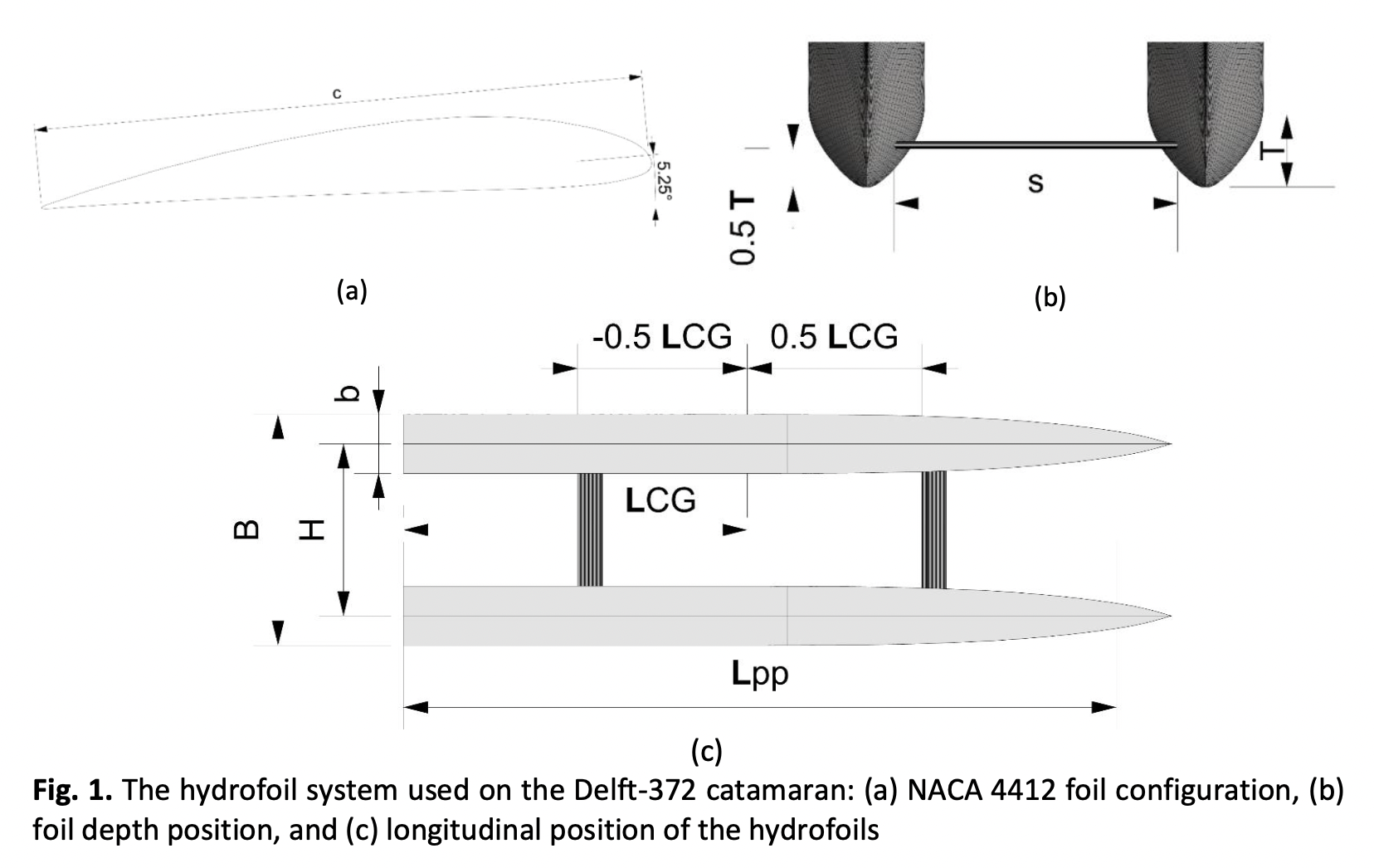Ship Performances CFD Analysis of Hydrofoil-Supported High-Speed Catamaran Hull Form
DOI:
https://doi.org/10.37934/arfmts.113.1.108121Keywords:
Hydrofoil supported catamaran, high-speed catamaran, CFD, ship performanceAbstract
Fast ferries with efficient fuel use are becoming increasingly in demand as fossil fuels become more in short supply and metropolises expand all over the globe in coastal and estuarine environments. These criteria need to be fulfilled by the Hydrofoil Supported Catamaran (HYSUCAT). A catamaran with wings between its demi hulls is known as an HYSUCAT, and it combines the positive traits of both the catamaran (manoeuvrability, big deck area) and the wing in-ground vehicle (excellent lift-to-drag ratio). In this research, a concept design Delft-372 catamaran is refitted with a high Reynolds number foil system to lower its overall resistance. The numerical solution of the Reynolds-averaged Navier–Stokes (RANS) equations employing the k-w SST turbulence model is used to simulate the flow around a high-speed catamaran with a hydrofoil. According to the simulation findings, the hydrofoil-assisted catamaran was determined to be a viable alternative to the current catamaran. This is due to a significant decrease in the overall resistance of the ship, reaching up to 42%, as well as notable improvements in pitch angle, reaching up to 26%.
Downloads

































